The capital of the Tirol is ringed with ski areas, which together serve up a mouthwatering range of ski terrain. Add the interest of the city itself – and the convenience of the airport – and you’ve got the makings of a ski weekend, or a ski safari, that’ll stretch both mind and body.
Altitude: 574m
Lifts: 111
Top Lift: 3210m
Ski area: 308km of piste
Adult lift pass: €284 for six days
Official Site |
Ski Map |
Webcam
Professional freerider Flo Orley was born in Innsbruck. “I probably spent more time riding my board on the slopes of the Nordkette, above the city, than I did in school,” he says. He spent 15 years competing on the Freeride World Tour, but still lives in Innsbruck with his family, and still rides the local mountains. “Wherever the snow is freshest and deepest,” he says, “that’s where I’ll be.”
Covid-19 Safety Protocols
Click on the link for details of the latest safety measures in and around Innsbruck.
Click on the link for information about travel to Austria.
Skiing Around Innsbruck: An Overview
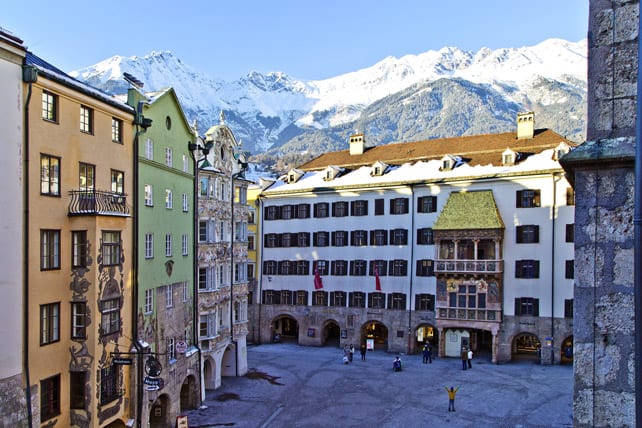
You’re probably thinking, “Innsbruck? That’s a city, not a ski resort. Why would I want to go there?”
But take a look at the map. This is a place ringed with mountains. Immediately to the north lies the Nordkette. South-east of the city centre are the famous Olympic pistes of the Patscherkofl, while due south you’ll find the main east-west ridge of the Alps, and the snowsure slopes of the Stubai Glacier.
In fact, there are 13 ski areas dotted around the city that are covered by the same Ski Plus City Pass, and together they offer an extraordinary variety of terrain. There’s everything from broad, glacier pistes where the snow is almost always soft and squeaky, to Olympic-standard superpipes, and breathtaking, stomach-in-your mouth chutes.
They can all be reached in under an hour by car from the city centre, and some are far more accessible than that. To get to the Nordkette, for example, you board a mountain railway in the middle of the city. To ski the Patscherkofl, just jump on bus route J in the city centre. For anyone who has just touched down at Innsbruck airport – and can see some of the best pistes and couloirs from the runway – it’s a tantalising prospect.
Of course, that doesn’t mean everyone is going to like the Innsbruck way of skiing. If your taste is for a ski-in, ski-out chalet in one of the big, integrated ski areas such as the Skiwelt, or the Arlberg, or the Three Valleys or Tignes-Val d’Isere in France, then it isn’t for you.
But if you’re looking for a bit of grit, and more variety than any single lift system can contain, you’ll love it. After all, this is a city where 125,000 people work, study and raise their kids: and whenever they can they’re out in the mountains, screaming down the Nordkette steeps, pulling tricks in the Kuhtai terrain park, or ski touring at night by the light of a headtorch in Axamer Lizum. Skiing is not just a winter holiday here: it’s a part of everyday life.
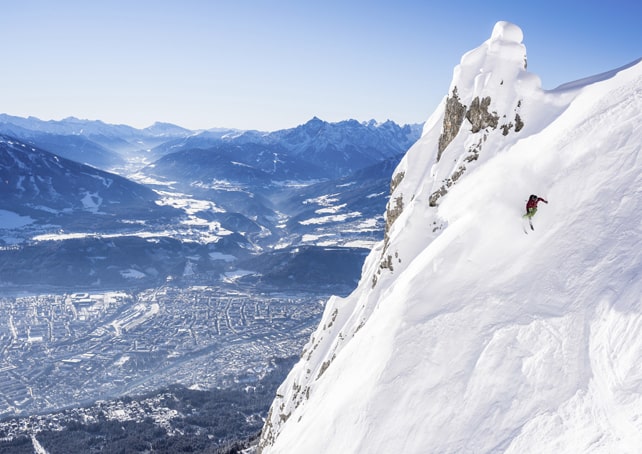
So how should you ski it?
The obvious way to ski Innsbruck is on a short break. No international airport will get you closer to the Alps than Innsbruck airport, and if you book a city-centre hotel, the transfer will take you 15 minutes. You can hire ski equipment in the middle of town, too.
(Bear in mind, however, that when it’s foggy or snowing hard, Innsbruck airport will sometimes close, and you’ll find yourself being redirected to Munich. In this case, there’s always a free bus laid on, but it will lengthen your journey by three or four hours.)
Once installed, you can then day-trip out to a resort, picking the one with the terrain you want (see “A Short Guide to the Skiing”, below), and the best snow. One of Innsbruck’s great strengths is the fact that its ring of mountains encompasses two separate climate zones, and it gets snow from both the north and the south. When the snow comes from the south, the Stubai glacier benefits. When it comes from the north, the Nordkette is often knee-deep in powder. So if off-piste skiing or snowboarding is your goal, keep an eye on the snow forecasts and snow reports before you arrive, and head to wherever the white stuff is freshest and deepest.
If time’s short, then you should definitely ski at least one of the areas right on the edge of town – either the Nordkette or the Patscherkofl – and then spend your second day at the Stubai Glacier or Axamer Lizum.
Having your own hire car works best for the more far-flung areas, although there are bus services from Innsbruck connecting several of the local resorts – in including Axamer Lizum and the Stubai Glacier. They’re free to those with a Welcome card, which is itself free for anyone staying two or more nights in Innsbruck and surrounding villages.
That said, you should stay a whole week if you can. Either stay in one place, or put together a ski safari and move hotels during the trip – and promise yourself you’ll ski in at least four different areas. That way, you’ll really understand why Innsbruck’s skiing is special.
Set aside some time for the city, too
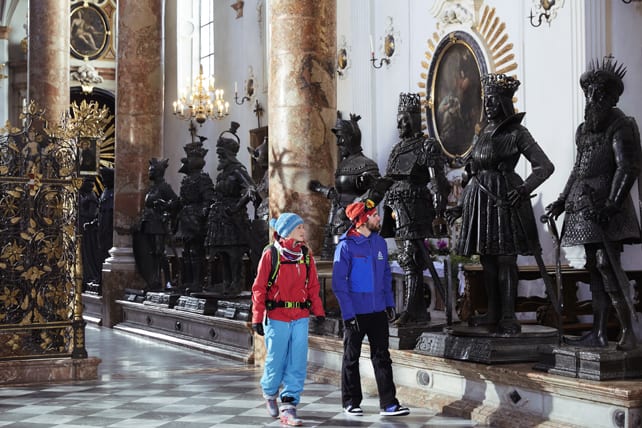
Thanks to its long association with the Hapsburg emperors, and its current status as the capital of the Tirol, Innsbruck packs a big punch for a small city. Exploring the exceptional art collection at the Ferdinandeum, and the imperial monuments in the Hofkirche adds an extra dimension to the trip.
So too the chance to get stuck into its superb cake-and-coffee scene, which has anchored Innsbruck afternoons since the 18th century. Konditorei Café Walter is a locals’ favourite. It uses top-notch Valrhona chocolate in its cakes.
You can also make your own skis in Innsbruck – at the Spurart workshop on the northern side of the city.
Here’s a very short video taster of Innsbruck and the lower half of the Nordkette, courtesy of a promotional video in the Chairlift Chats series.
ARVE Error: For the maxwidth (maxw) option you need to have normal or lazyload mode enabled, either for all videos in the plugins options or through shortcode e.g. [youtube id=123456 mode=normal maxw=999 ].
A Short Guide to the Skiing
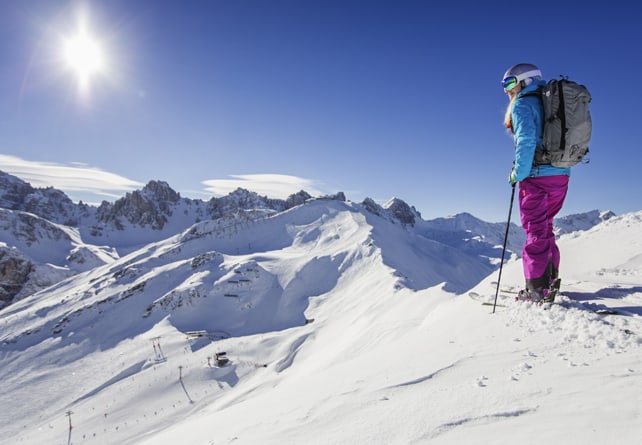
No doubt about it, Innsbruck suits energetic skiers best – because at whatever level you’re skiing, you’ll need some get up and go to understand its appeal.
Yes, you could always stick to one of the larger ski areas (such as Kuhtai or the Stubai Glacier), which would work for a couple of days. But this place really comes into its own when you ski at least four or five different lift systems. There are nine in all, offering 300km of piste, with some world-class off-piste terrain in between. The sense of variety will make you giddy.
Which lift pass should I buy?
Some of the ski areas have flexible pricing systems. For example, to ride on the Nordkette’s lifts you can buy morning and afternoon passes as well as full-day ones. But for stays of three days or longer, the Ski Plus City Pass, which covers 13 ski areas, is the one to go for.
Off-pisters will love the Nordkette
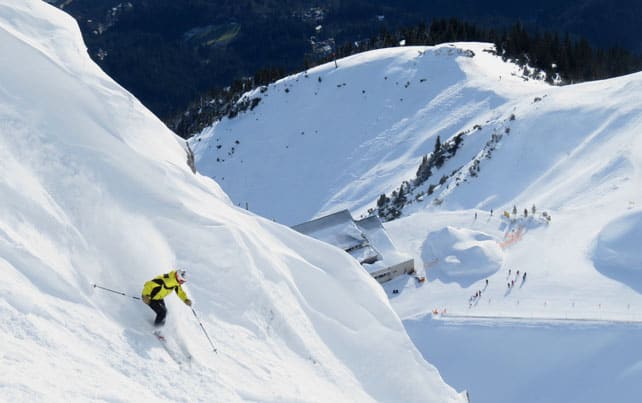
The Nordkette is the most accessible mountain – via Zaha Hadid’s super-cool mountain railway, which leaves from an underground station in city centre. It’s home to some of the most exciting off-piste terrain in the region, and the sense of weirdness when you come back down again is one of the lasting impressions of Innsbruck.
There you are, the adrenaline still pumping, and the snow not quite melted on your ski boots, walking back to your hotel through city streets, past shoppers and tourists. It feels just a little bit James Bond…
Two things distinguish the Nordkette. First are the super-steep chutes you can hike to from the top of the cable-car station. Protected against avalanches, they serve up extraordinary views of the city, and lead into a wide mountain bowl.
Second is the fact that during a Nordstau (a snowstorm from the north) a lot of extra powder blows over the ridge and settles in its south-facing bowls. You need to ski it quickly before the sun affects it, but in the right conditions it’s a superb experience.
The Patscherkofl belongs to Franz Klammer
Bad Klein Kirchenheim may be the home resort of the Austrian ski hero Franz Klammer. But in the eyes of the international ski community, the Patscherkofl is his mountain. Because it was here, in the Winter Olympics of 1976, that he won what is probably the most famous ski race of all time.
With a seemingly impossibly low start number he tore down the course, taking a line dismissed by the leading Canadians as simply too dangerous. His pole brushed the boundary fence and to the watchers down below and on television around the world it seemed inconceivable that he could remain upright. But he threw himself into the finishing jump to snatch victory by a micro-second.
You can still ski most of Klammer’s run on a piste called, not surprisingly, the Olympic Downhill. It’s marked #1 on the map, and despite the drama of 1976, any reasonably confident intermediate can ski it – provided they put in a few turns en route. You’ll also find good nursery slopes here, and a terrain park – as well as the Olympic bobsleigh run, which offers mind-blowing, 115kph descents to paying guests.
The Stubai Glacier: paradise for piste skiers
From the centre of Innsbruck, the Stubai Glacier is a 45-minute drive – and on a sunny day it’s where any self-respecting intermediate or high-speed carver should be. With 65km of steady, super-wide pistes, most of which are set between 2600m and 3210m, it’s home to some of the most consistent snow in the Alps, as well as some of their most ego-boosting pistes. (It’s also Austria’s biggest glacier-skiing area.) If you can’t make good turns here, you should probably throw away your ski boots and take up tiddlywinks instead.
Bear in mind, however, that it can get busy at the weekends: especially during a mild spell when everyone is migrating uphill in search of soft, wintry snow. For the a joyous, empty-pistes experience, ski here between Monday and Thursday.
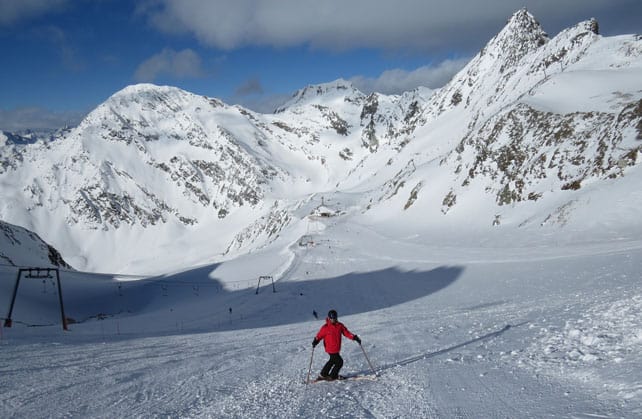
Something for everyone at Axamer Lizum
20km from Innsbruck, Axamer Lizum sits in a cold, north-facing bowl and offers 40km of pistes beneath the magnificent Kalkkögel mountains – known as the North Tirol Dolomites. There are some lovely long pistes here (which were used for racing in both the 1964 and 1976 winter Olympics).
Piste 3, for example, follows the course of both the 1964 Giant Slalom and the 1976 Women’s Downhill, and on its lower section is a hell-for-leather fall-line run between the trees. Plus there are 300 hectares of freeride terrain, several popular ski-touring and split-boarding routes, and a snowpark. All the pistes are between 1580 and 2340m, which isn’t high by the standards of Kuhtai or the Stubai glacier, but the north-facing slopes hold their snow well, and there are snow cannons on key runs for back-up.
Snowy Kuhtai is home to the region’s best terrain park
It’ll take just under an hour to drive up to Kuhtai – another pocket-sized ski area with 41km of pistes. But it’s well worth the journey, especially for freestylers. The village is set at 2020m, and the top lift is at 2520m, and the north-facing slopes usually hold their snow well into May. Freeriders, intermediates and ski tourers will have a great time here too: read Welove2ski’s separate Kuhtai resort guide for more.
And here’s a little bit of Kuhtai’s freestyle flavour.
https://www.youtube.com/watch?v=j-lG-FMCmtI&t=93s
And that’s not all…
Other Olympiaworld ski areas to sample include Glungezer, which is home to 22km of pistes and one of the longest downhill runs in the Tirol – more than 15km in length. Meanwhile, Oberperfuss is a family-friendly area 12km west of Innsbruck. A gondola accesses Rangger Köpfl, a sunny ski area with 17km of slopes for beginners and intermediates. There’s also a 10km-long natural toboggan run.
Snow quality
The Stubai Glacier is your snow insurance policy, and is open from mid-autumn to early summer. But you want to come when as much of the terrain right across the region is in tip-top condition. So aim for a January or February visit.
Where to Learn

There lots of ski schools in and around Innsbruck: in fact you’ll find 20 listed here. One of their defining characteristics is the breadth of disciplines they cover – reflecting the size and diversity of the local market, which is key part of their business. Yes, of course, you will get expert coaching on your parallel turns but freestyle, telemarking, split-boarding, cross-country and ice-climbing are often on the menu, too.
Some, such as the Ski & Snowboard School Innsbruck offer tuition in several areas. Others, such as Snowsport Igls – focus on one ski area. Competition keeps prices low. For example, 2.5hrs of private lessons with Ski & Snowboard School Innsbruck costs €150-160, compared with €280 in some ski schools in Courchevel, France.
Axamer Lizum is the venue for ski instructor courses, run by the Tirol Ski Instructors Association, and based in “the only hotel for ski instructors in the world”, the Lizum 1600 (although the general public can stay here too).
The entry-level course is for the basic Schilehrer-Anwarfer qualification, which includes nine days of training, followed by written and practical tests, and they’re open to anyone who can speak German, and can make proper parallel turns on the steeper kind of intermediate piste. If you pass, you’ll be qualified to teach beginners of any age in Austria, Switzerland, Italy and Germany.
Axamer Lizum is also a good spot for off-piste and avalanche-safety training, thanks to its long freeriding tradition, as are freeride-friendly Nordkette and Kuhtai. Meanwhile, Igls is a great venue for kids, along with the Stubai glacier and Neustift in the Stubaital, beneath it. Up on the glacier there’s a large nursery area with covered moving carpets and an indoor play area with painting classes and other children’s entertainment on offer.
Where to Stay
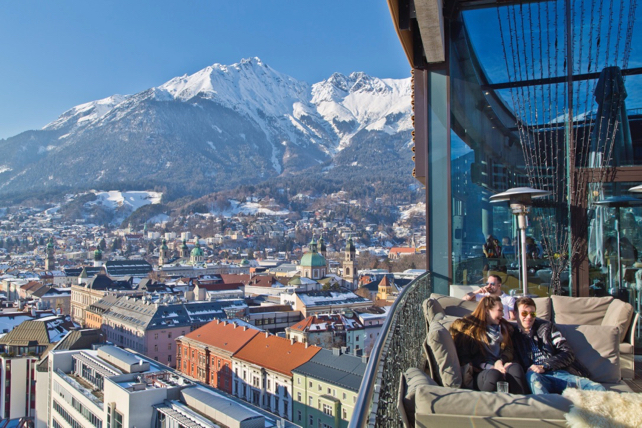
Now that the Grand Hotel Europa has closed, the Hotel Adlers is the property of choice in central Innsbruck. At 14 storeys, it’s the city’s tallest hotel – and has a cool roof-top bar (pictured, above): the best après-ski venue in Innsbruck. Not only is it handy for the local bus up to the Patscherkofel, and a short walk from the Nordkette’s funicular station, it’s also just above the public Pema car park.
Meanwhile, its sister hotel, the Hotel Schwarzer Adler, is pastel pink on the outside and has recently-refurbished rooms. Suites are themed – Versace, Tirol, Kaiser Maximilian.
Guests at the four-star Goldener Adler include Mozart, Wagner, Goethe, Camus and Sartre. The hotel is located in the historic and pedestrianised core of the city, and it’s only a short walk to the Nordkette’s mountain railway. The nearest underground car park is 150m away. The newly-refurbished rooms are a clever mix of traditional materials and modernity: the deluxe doubles in particular are lovely.
The Penz Hotel is part of the glass-walled town hall and has 360 degree views. Hotel Weisses Kreuz is a 500-year-old hotel in the historic core of the city and is where Mozart stayed as a child.
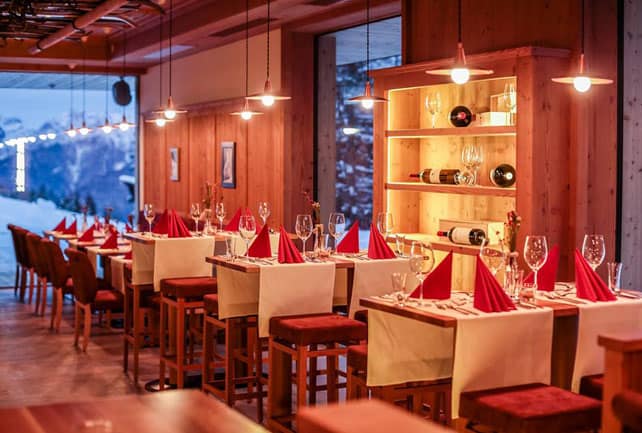
Staying in the middle of Innsbruck is the best option if you want the classic Innsbruck experience of urban swagger mixed with day trips to the slopes. But there are of course plenty of hotels near or in the ski areas.
Probably the best compromise between city and mountain is Igls. Perched just above the city centre at 870m, it has the pistes of the Patscherkofl on the doorstep, while Innsbruck is 15 minutes away on the local bus. Given it’s so close to the city, it’s remarkably quiet and villagey, and has some good hotels, notably the Sporthotel Igls (known for its food), and the Bon Alpina.
In Axamer Lizum, the new, ski-in, ski-out Lizum 1600 is the place to stay. Ostensibly, it’s designed to house the candidates on the ski-instructor training courses organised there. But its bright, unfussy and spacious rooms can be booked by anyone, and it has a lovely, light and airy slopeside bar and bistro. Plus, with all the ski instructors milling about, you’ve got a bit of ready-made buzz in the evenings.
Meanwhile, in the Stubaital, beneath the Stubai glacier, the five-star, Relais & Chateaux Hotel Jagdhof in Neustift is the place to stay for proper luxury with a Tirolean flavour.
Where to Eat

One of the great things about skiing in the Innsbruck region is how cheap the mountain food is. For example, a few season ago on the Nordkette, the Alpenlounge Seegrube restaurant was serving a delicious duet of two dumplings with Sauerkraut for just €7.90. Even now, a plate of pasta at the Hoadl-Haus – at the top of Axamer Lizum – is €8.90. That’s the price of a plate of chips in some French self-service restaurants. It’s what comes from having such a big city on your doorstep. You need the locals to keep coming back at the weekend if you want your business to work. And they won’t if you charge rip-off prices.
Meanwhile, down in the city, the dinner options are legion. Top of everyone’s gastronomic hitlist is Oniriq, where Tirolean chef Christoph Bickel has applied twenty years of international experience to the job of re-inventing Austrian food. With four toques and 17.5 points from Gault Millau it’s one of the Tirol’s most highly-rated restaurants. Meanwhile Das Schindler, which occupies a pared-back, open-plan room with big-window views of the city centre. Local-sourced food is its speciality, all the way from pikeperch and watercress soup to homemade raspberry sorbet. Meanwhile Gaia Cuisine mixes big Asian and European flavours – the menu includes truffle vermicelli, and spinach soufflé with shitake mushrooms.
Where to Party
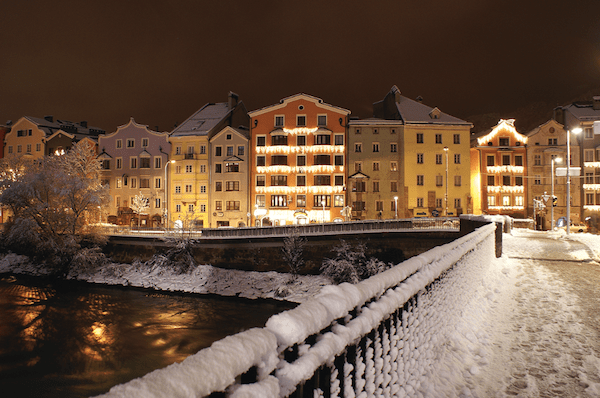
Innsbruck has a lot to offer beyond the slopes, and you’d be mad not to add some sightseeing to your list of must-dos. The Goldenes Dachl (‘Golden Roof’) in the middle of the Old Town is probably the highlight. Emperor Maximilian commissioned the gilding of the 2,657 roof shingles at the start of the 16th century. Then there’s the state apartments of the Kaiserliche Hofburg (Imperial Court Fortress), various Gothic confections, and two interesting museums.
The Volkskunst Museum features folk art, such as handcarved sleighs, Christmas cribs and carnival masks. Meanwhile, the Ferdinandeum is one of the best regional art museums in Europe: and includes paintings by Gustav Klimt and Oskar Kokoschka, as well as the Tirol’s own Albin Egger-Lienz. There’s also a fine collection of Dutch still life from the 17th century.
The all-inclusive Ski Plus City Card makes everything easy: allowing free access to many museums and attractions in town. From mid-November to the beginning of January each year the city holds a popular Christmas Market with 70 stalls selling everything from Christmas tree decorations and Gluhwein to arts and crafts. The Italians love it, and come in their thousands.
Bergisel Stadium is the ski jumping tower designed by architect Zaha Hadid, on the site of the original 1925 ski jump. The Olympic flame burnt here during the Winter Olympic Games in 1964 and 1976. The restaurant and the visitor’s platform in the tower offer a 360 degree panorama of the city.
…and not forgetting the bars and clubs
Krahvogel is a brewery which also serves affordable, hearty food, while Moustache is a lively bar with a warren of little rooms – one of which features live music.
At the Dom Bar vaulted ceilings and antiques mix with modern furniture. Meanwhile, Machete is a burrito restaurant in the middle of town that’s as much a place to go for a drink as it is for eating.
If it’s a night of classy cocktails you’re after, then the bar at Das Schindler restaurant is the place.
By the way, don’t leave the city without trying a Hugo (pronounced ‘ugo’), the essential Tirolean cocktail. It was invented in the area and is a bit like a Mojito in that it shares similar ingredients, such as lime and mint.


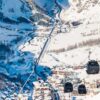
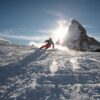






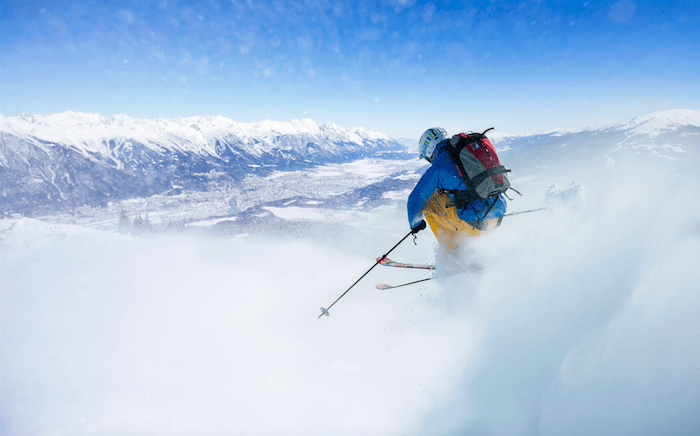
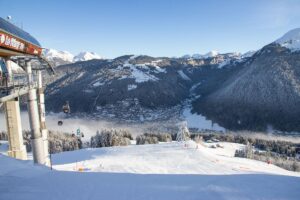
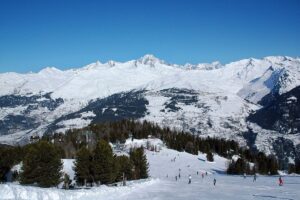
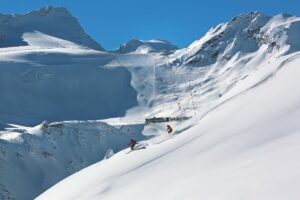
There’s loads of useful information packed into your post. I’m impressed. While living in Bavaria I skied in many of the Austrian resorts and reading this really makes me want to return.